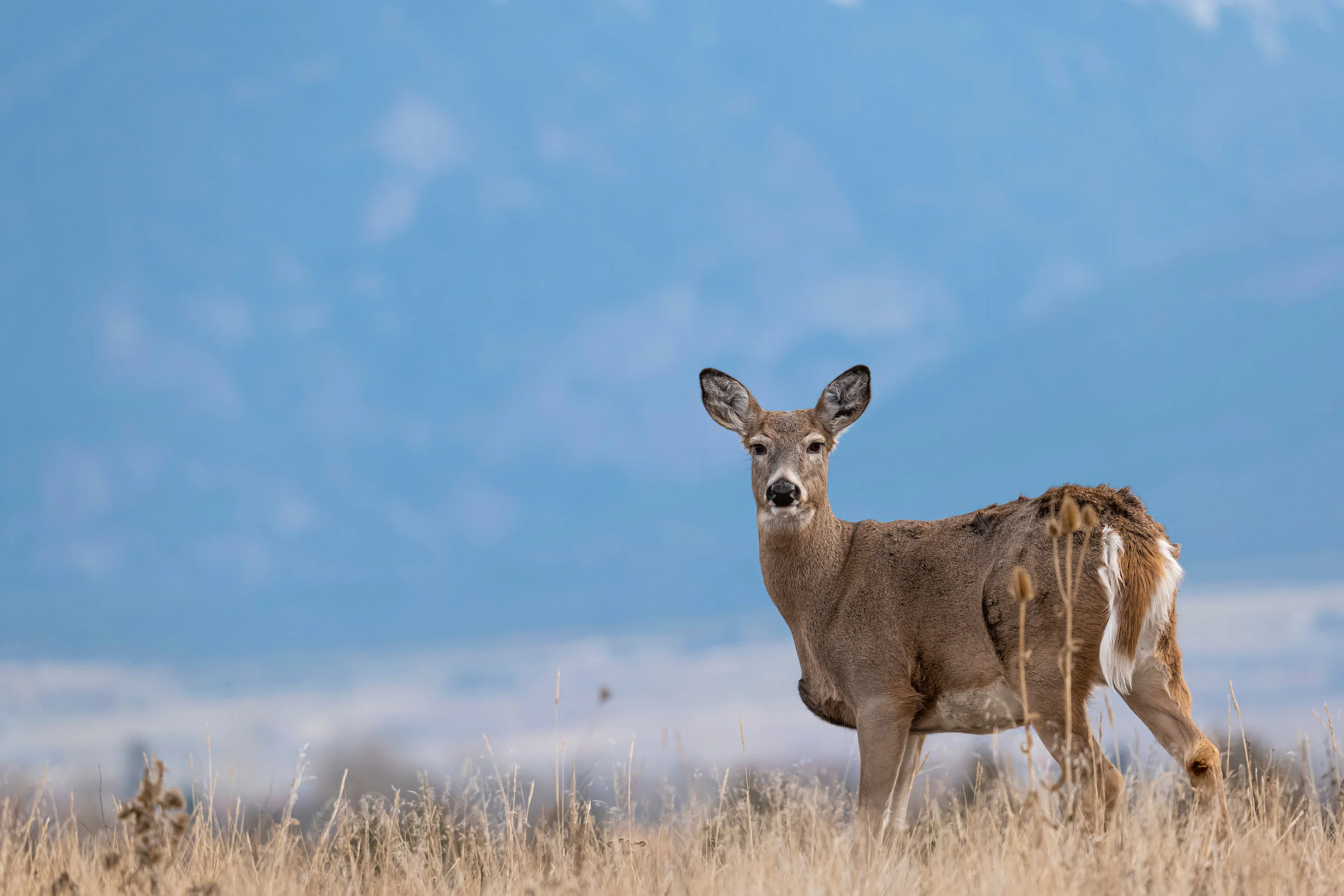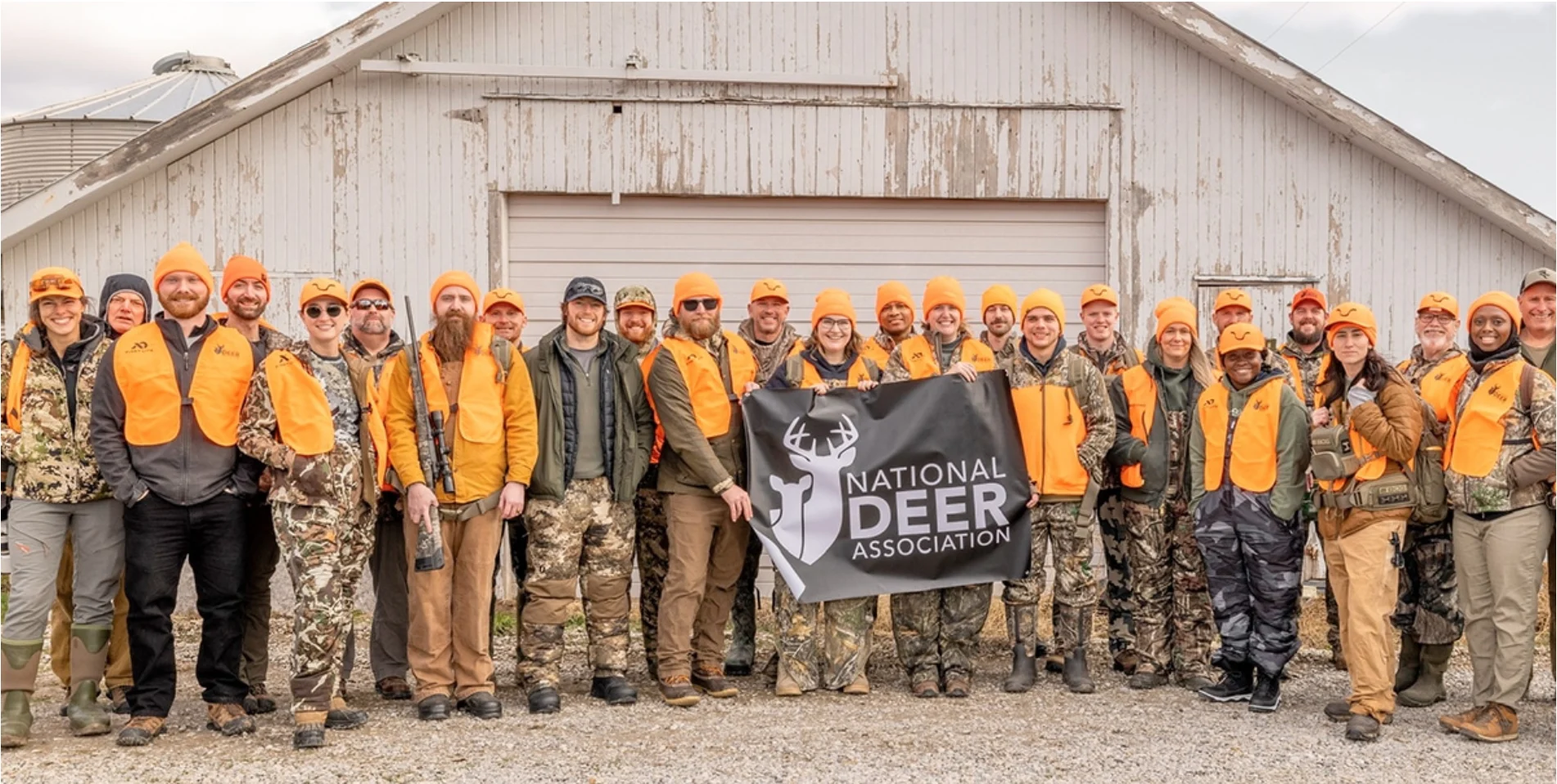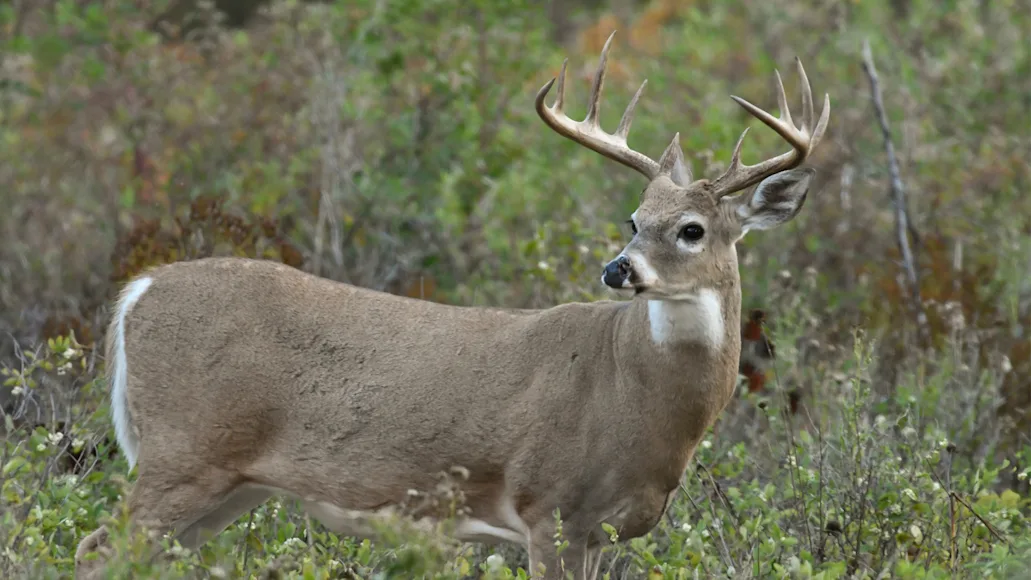In many ways, we’re living the good old days of whitetail deer hunting right now. There are more deer on the landscape than ever before; opportunities for a hunter to tag a mature, trophy-size buck are at an all-time high; and deer hunters have never been more knowledgable or better equipped.
That's all great, of course. But it doesn't mean we don't have our challenges—because we do, and the best way to handle challenges it to identify them clearly and face them head on. So, with that in mind, I reached out to Kip Adams, chief conservation officer for the National Deer Association. Below, Adams points to four major issues, as identified in the NDA’s Annual Deer Report, and details how each effects deer hunters across the country and what we can do about them.
Challenge No. 1: Declining Does Harvests

This is the perfect example of a good news/bad news scenario, Adams says. If you’re interested in tagging a mature buck, things have never been better, according to statistics in the NDA’s annual report.
“In 2022-23, only 26% of bucks harvested nationwide were 1-½ years old,” Adams says. “Not long ago, that number was typically between 60 and 70%. Also in 2022-23, 42% of bucks harvested nationally were 3-½ years or older. Twenty one states have some form of antler restrictions for at least one buck, and most of those rules came from hunters asking state agencies to implement them. For a growing number of hunters, waiting to harvest a mature buck is a goal that has added to their enjoyment of the deer hunting experience and that’s been fascinating to watch," Adams says.
That's the good news. The bad news is a correlating drop in doe harvest. According to Adams, hunters are dropping the ball in this area. “We’ve seriously back-slid and are under-harvesting does in some areas,” he says. “There are simply fewer people willing to shoot does these days, and in the early days of (QDM) education that wasn’t as much of a problem. But these days, only 41% of hunters tag any deer in the course of a year, and only 18% of hunters shoot more than one deer. Since most hunters hold out for a buck for their only deer, that means a drop in antlerless harvest, and in areas with too many deer, that becomes a real problem.”
Challenge No. 2: Shortage of Meat Processors
Perhaps one of the contributing factors to the drop in antlerless harvest is the precipitous decline in meat-processing facilities, particularly ones willing to take deer. “This is a huge story and is playing out on a national basis,” Adams says. “Most hunters are willing to shoot bonus antlerless deer, provided they have a place to process them and donate the meat. Unfortunately we’re losing meat processors at a frightening pace lately. Just here in my area of rural Pennsylvania, a guy who used to do 400-800 deer every fall closed up shop. And that’s happening across the country in so many places. It’s becoming a huge problem.”
Adams says the trend is troubling on multiple levels; not only does it contribute to a drop in antlerless harvest, but it robs hunters of a chance to help alleviate food shortages. “One in seven households in America are food insecure,” he says. “There’s a huge need for protein across the country, and hunters could emerge as heroes in this arena, but we need to solve this processor shortage first. States like Maryland and Arkansas are shining examples of what’s possible for hunters in this area. Maryland’s Farmers and Hunters Feeding the Hungry has a huge waiting list of people who want deer, and hunters continue to step up to the plate and donate. The Arkansas Game & Fish Commission recently committed to pay for the processing of venison snack sticks, which they distribute to schools. Both programs are wildly popular but are limited by the number of processors willing to take deer. We have to solve this problem, and not just for hunters; processing beef and pork poses a similar challenge, and I think involving dollars from federal agencies like the Farm Bureau is one possible solution. Something needs to be done soon, as this is not going away on its own.”
Related: How to Butcher Your Own Deer, Step-By-Step
Challenge No. 3: Hunter Recruitment

It’s no secret that the trend in hunter numbers, especially as a percentage of the general population, has been an area of concern for several years, and Adams says the problem continues. “Hunter numbers are relatively stable right now, but we are definitely aging out, and those numbers will drop in the future,” he says. “Youth recruitment programs are fantastic, but unfortunately they’re not moving the needle much. We need to focus on opportunities for more than white males who live in rural areas, and every hunter should make it a yearly goal to introduce a new hunter and mentor them for at least one season. And if that hunter doesn’t look one bit like you, all the better.”
Adams points to the NDA’s Field to Fork program, which pairs mentors with new adult hunters for a weekend of education and actual hunting experience. “We’ve done many Field to Fork events attended by women and hunters of color,” Adams says. “Over 70% of surveyed Americans approve of hunting for meat, and so many people like hunting and all that goes with it; they just need the opportunity and often some guidance to make it happen. Adams encourages hunters to volunteer for Field to Fork and similar events, but also to just reach out to potential hunters on a personal level, even if official events don’t exist locally.
Challenge No. 4: Chronic Wasting Disease
While most hunters yawn when it comes to reading about deer disease, Chronic Wasting Disease (CWD) continues to be a chief area of concern for the NDA according to Adams. “We still view it as the single largest threat to whitetails and deer hunting,” he says. “It has now been detected in 33 states and is more a part of our world than it was when it was first discovered over 50 years ago. Fortunately, more hunters recognize it as a serious problem and are participating in the monitoring and surveillance that are the best tools we have for combating the disease right now.”
Adams feels that while many aspects of CWD remain mysterious and unknown, progress is being made in important areas. “Probably the best news is that testing of venison samples is getting quicker,” he says. “In my home state of Pennsylvania last year, hunters had results within five days. That’s a vastly better turnaround time than just a few years ago, when it might take weeks. States are also getting better at communicating with hunters, educating them about why providing a sample is so important. They’re also getting much better at sharing information and engaging hunters as partners, and helping them realize that long-term cooperation is one of the keys to learning to live with CWD."
As hunters, we can often get frustrated with rules and regs pertaining to CWD, and as a hunter who lives in a CWD zone, I say that from personal experience. But Adams points out that fight against this disease is a long game. It may involve some trial and error, and it's going to take patience and cooperation to minimize its effect on the resource we all cherish and the sport we all love.


